Christ Posted on Posted in Tips No Comments Tagged with Chevy Cruze tpms, Reset Tire Pressure Sensor, reset tpms light on Cruze
Last Updated on October 18, 2020 by Christ
How To Reset Chevy Cruze TPMS Tire Pressure Sensor Light (2012-2019) – The Chevrolet Cruze is an average car produced since 2009 by the Korean automaker Daewoo (now GM Korea as part of the US group General Motors). The car replaces the Chevrolet Lacetti in Europe, while in the Asian markets is sold under the name Daewoo Lacetti Premiere and Australia is known as the Holden Cruze.
The new world car in addition to adopting a single designation depending on the manufacturer brand has been designed on a totally new platform (chassis Delta II) developed by the Opel engineers to fit even on the fourth generation of the Astra. The design anticipates the lines of future cars of the mark, characterized by a frontal angular equipped with a large mask, elusive headlights, and ribs on the hood.
If you receive a low-tire-pressure monitoring system (TPMS) warning light while driving and you want to clear or turning off the warning light on your 2012 2013 2014 2015 2016 2017 2018 2019 Chevy Cruze, follow these instructions:
Time needed: 17 minutes.
If you replaced a wheel, tire, TPMS sensor, etc. and are now getting a warning light on your car, then the sensor needs to be reset. To relearn or reset the Tire Pressure Monitoring System (TPMS) sensor on your Chevy you must have a TPMS relearn tool and follow these steps:
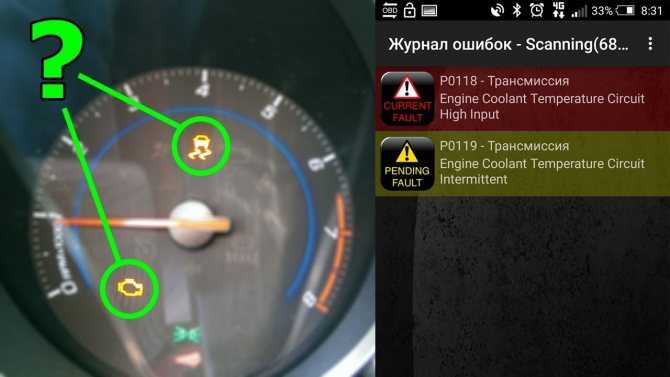
Press the button to access the cluster app.
Scroll up and select “Tire Pressure Menu”
Press and hold the button
The horn sounds twice to signal the receiver is in relearn mode

For more details, please watch the following video:
This tutorial is based on the Chevrolet owner’s manual. This procedure should be work on the latest generation of Chevy Cruze (2012 2013 2014 2015 2016 2017 2018 2019 model years). Hopefully, the article How To Reset Chevy Cruze TPMS Tire Pressure Sensor Light (2012-2019) useful for you. Good Luck!
SUBJECT VEHICLES: 2011-2017 Chevrolet Cruze.
RELEARN PROCEDURE? Yes.
SPECIAL TOOLS NEEDED? Yes. TPMS Special Tool (EL-46079 or EL-50448).
The tire pressure monitoring system (TPMS) of the 2011-2017 Chevy Cruze uses the instrument panel cluster (IPC), body control module (BCM), four radio frequency transmitting pressure sensors, and the serial data circuit to perform the TPMS relearn mode functions. Once the relearn mode has been enabled, each of the sensors’ unique identification codes can be learned into the BCM memory.
When a sensor ID has been learned, the BCM sounds a horn chirp indicating the sensor has transmitted its ID and the BCM has received and learned it. The BCM must learn the sensor IDs in the proper sequence to determine correct sensor location. The first learned ID is assigned to the left front location, the second to right front, the third to right rear and the fourth to left rear. The turn signals will individually illuminate indicating which location is to be learned in the proper sequence.
When the tire pressure monitor system detects a significant loss or gain of tire pressure, the tire pressure monitor indicator icon is illuminated on the instrument cluster and, if equipped, a check tire pressure type message is displayed on the driver information center. Both the indicator icon and driver information center message can be cleared by adjusting the tire pressures to the recommended pressures and driving the vehicle above 25 mph (40 km/h) for at least two minutes. Each sensor has an internal low frequency coil. When the TPMS tool is used in activate mode, it produces a low frequency transmission that activates the sensor. The sensor responds to a low frequency activation by transmitting in learn mode.
When the TPMS tool is used in activate mode, it produces a low frequency transmission that activates the sensor. The sensor responds to a low frequency activation by transmitting in learn mode.
When the BCM receives a learn mode transmission while in TPMS learn mode, it will assign that sensor’s ID to the location on the vehicle relative to the order in which it was learned. The relearn mode will cancel if the ignition is cycled to OFF or if more than two minutes has elapsed for any sensor that has not been learned. If the relearn mode is cancelled before the first sensor is learned, the original sensor IDs will be maintained. If the relearn mode is canceled after the first sensor is learned, the following will occur:
Tire pressure monitor warning indicators
The tire pressure monitor system warns the driver when a significant loss or gain of tire pressure occurs in any of the four tires and allows the driver to display the individual tire pressures and their locations on the driver information center (DIC). When the tire pressure monitor system detects a significant loss or gain of tire pressure, the tire pressure monitor indicator icon is illuminated on the instrument cluster.
When the tire pressure monitor system detects a significant loss or gain of tire pressure, the tire pressure monitor indicator icon is illuminated on the instrument cluster.
NOTE: If power is disconnected from the BCM or if the vehicle battery is disconnected, each tire pressure monitor sensor ID is retained but all of the tire pressure information is lost. The DIC will display all dashes and the scan tool will indicate a default tire pressure value of 148 psi (1,020 kPa) for each tire. Driving the vehicle above 25 mph (40 km/h) for at least two minutes will activate the sensors causing the DIC to display the current tire pressures.
The BCM has the ability to detect malfunctions within the tire pressure monitor system. In the event a DTC is set, the tire pressure monitor indicator icon on the instrument cluster will flash for one minute and then remain illuminated after the ignition is turned ON and the instrument cluster bulb check has been completed. Any malfunction detected will cause the driver information center to display a service tire monitoring system type message.
Press MENU on the turn signal lever until Vehicle Information Menu is displayed. Use to scroll through the following menu items:
The display will show the approximate pressures of all four tires. Tire pressure is displayed in either kilopascal (kPa) or pounds per square inch (psi).
Reset procedures
NOTE: When the wheels have been rotated, or a tire pressure sensor has been replaced, retrain the tire pressure sensor. When the tire pressure monitoring system detects a significant loss or gain of tire pressure, the tire pressure monitoring indicator icon is illuminated on the instrument cluster and, if equipped, a check tire pressure type message is displayed on the driver information center. Both the indicator icon and driver information center message can be cleared by adjusting the tire pressures to the recommended pressures and driving the vehicle above 25 mph (40 km/h) for at least two minutes.
Tire pressure sensor relearn
NOTE: If using the TPMS tool to activate the sensors, any stray sensor signals will not affect the relearn procedure. In the event a particular sensor’s information is displayed on the special tool upon activation but the horn does not chirp, it may be necessary to rotate the wheel valve stem to a different position due to the sensor signal is being blocked by another component.
NOTE: If using the pressure increase/decrease sensor activation method, ensure that no other learn procedure is being performed simultaneously or that tire pressures are not being adjusted on another TPMS-equipped vehicle within close proximity. Stray signals from other TPMS-equipped vehicles just driving by can be inadvertently learned. If any random horn chirps are heard from the vehicle while performing the learn procedure, most likely a stray sensor has been learned and the procedure will need to be cancelled and repeated. Under these circumstances, performing the TPMS relearn procedure away from other vehicles would be highly recommended. In the event a particular sensor activation does not cause the horn to chirp, it may be necessary to rotate the wheel valve stem to a different position due to the sensor signal is being blocked by another component.
In the event a particular sensor activation does not cause the horn to chirp, it may be necessary to rotate the wheel valve stem to a different position due to the sensor signal is being blocked by another component.
1) Turn the ignition switch to the ACC position.
2) Activate the relearn mode using an OEM scan tool or driver information center (DIC) buttons (see below). A double horn chirp sounds indicating the relearn mode has been enabled and the left front turn signal will also be illuminated. If the vehicle has an uplevel DIC, use the DIC controls on the right side of the steering wheel (see Figure 2) If the vehicle has a base level DIC, use the controls on the turn signal lever (see Figure 3).
3)Starting with the left front tire, activate the tire pressure sensor using one of the following methods: Increase/decrease the tire pressure for 8-10 seconds then wait for a horn chirp. The horn chirp may occur before or up to 30 seconds after the 8-10 second pressure increase/decrease time period has been reached. Once the horn chirp has sounded, the sensor information is learned and the turn signal in the next location to be learned will illuminate.Hold the antenna of the TPMS Special Tool (EL-46079 or EL-50448) aimed upward against the tire sidewall close to the wheel rim at the valve stem location. Press and release the activate button. Ensure that the transmit indicator on the special tool indicates that the sensor activation signal is being transmitted. Wait for a horn chirp. If the horn does not chirp, repeat the sensor activation sequence with the tool.
Once the horn chirp has sounded, the sensor information is learned and the turn signal in the next location to be learned will illuminate.Hold the antenna of the TPMS Special Tool (EL-46079 or EL-50448) aimed upward against the tire sidewall close to the wheel rim at the valve stem location. Press and release the activate button. Ensure that the transmit indicator on the special tool indicates that the sensor activation signal is being transmitted. Wait for a horn chirp. If the horn does not chirp, repeat the sensor activation sequence with the tool.
Once the horn chirp has sounded, the sensor information is learned and the turn signal in the next location to be learned will illuminate.
4) After the horn chirp has sounded and the right front turn signal is illuminated, proceed as in Step 3 for the next three sensors in the following order: right front, right rear, left rear.
5) After the left rear sensor has been learned, a double horn chirp will sound, indicating all four sensor IDs have been learned. Turn the ignition switch to the OFF position. Adjust all tire pressures to specification.
Turn the ignition switch to the OFF position. Adjust all tire pressures to specification.
Demounting/mounting procedure
CAUTION: The tire should be demounted from the wheel using the tire changer manufacturer’s instructions. Use the following information to avoid damage during the demounting/mounting procedures.
NOTE: If the vehicle’s tires are replaced with those not having a TPC Spec number, the TPMS may give an inaccurate low pressure warning.
Non-TPC Spec tires may give a low pressure warning that is higher or lower than the proper warning level achieved by TPC Spec numbered tires.
NOTE: When the wheels have been rotated, or a tire pressure sensor has been replaced, retrain tire pressure sensor. See “Reset procedures.”
Tire pressure sensor
CAUTION: DO NOT inject any tire liquid or aerosol tire sealant into tires, as this may cause a malfunction of the tire pressure sensors. If any tire sealant is noted upon tire demounting, replace the sensor. Also remove all residual liquid sealant from the inside of the tire and wheel surfaces.
Also remove all residual liquid sealant from the inside of the tire and wheel surfaces.
Removal
1) Raise the vehicle on a suitable support. Remove the tire/wheel assembly from the vehicle.
2) Demount the tire from the wheel.
3) Remove the Torx screw (1) from the tire pressure sensor (2) and pull it straight off the tire pressure valve stem (3) (see Figure 4).
4) Remove the tire pressure valve stem by pulling it through the rim.Installation
NOTE: When servicing the tire pressure sensor, always use a new tire pressure monitor and a new Torx screw during installation.
1) Assemble the tire pressure sensor (2) to the valve stem and install the new Torx screw (3). Tire pressure monitor valves and Torx screws are one-time use only (see Figure 4).
2) Apply tire soap to the rubber portion of the valve stem (1).
3) Using a tire valve stem mounting tool, pull the valve stem through in a direction parallel to the valve hole on the rim.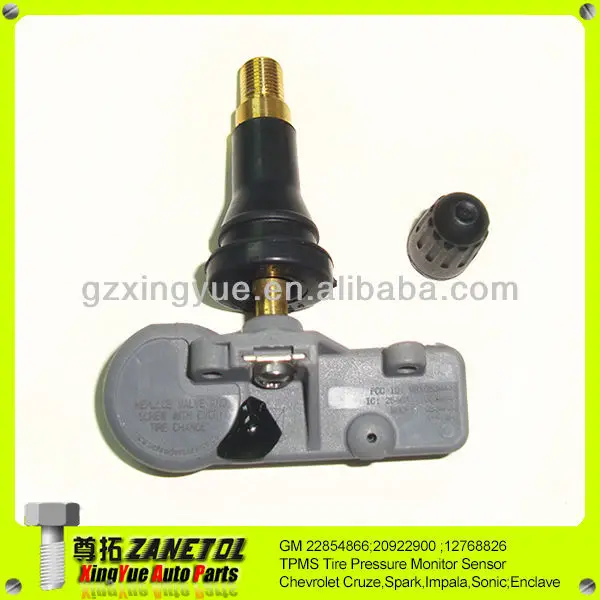
4) Mount the tire to the rim.
5) Install the tire on the wheel. Install the tire/wheel assembly on the vehicle. Retrain the tire pressure sensor. See “Reset procedures.” ■
Torque specifications
Component Ft.-lbs. (N.m)
Wheel nut 100 (140)
In.-lbs. (N.m)
Tire pressure sensor Torx screw 12 (1.4)
Information for this column comes from Mitchell 1’s “Tire Pressure Monitoring Systems Guide” for domestic and import vehicles. Headquartered in Poway, Calif., Mitchell 1 has provided quality repair information solutions to the automotive industry for more than 80 years. For more information, visit www.mitchell1.com.
You are the proud owner of a recent car, the joy of tactile gadgets, integrated technology should bring you the ease and comfort of using your Chevrolet Cruze, however, that says technology is talking about electronic, and as we all unfortunately often know the problem to be solved.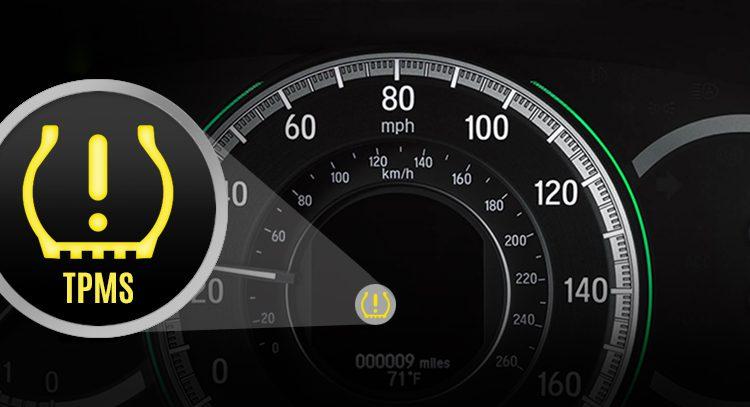 Today we will focus on the tire pressure sensor and specifically the tire pressure sensor. how to reset the tire pressure sensor on a Chevrolet Cruze so that this indicator is no longer displayed on the dashboard. To do this, we will divide our content into two parts: first we will explain the classic circumstance when the tire pressure indicator light appears and the method to follow, and then the circumstances when the tire pressure indicator remains on despite the tires being inflated. so how to reset this tire sensor on chevrolet cruz.
Today we will focus on the tire pressure sensor and specifically the tire pressure sensor. how to reset the tire pressure sensor on a Chevrolet Cruze so that this indicator is no longer displayed on the dashboard. To do this, we will divide our content into two parts: first we will explain the classic circumstance when the tire pressure indicator light appears and the method to follow, and then the circumstances when the tire pressure indicator remains on despite the tires being inflated. so how to reset this tire sensor on chevrolet cruz.
First we will look at the general approach to reset a tire sensor on a Chevrolet Cruze, which if it lights up, here are the basic steps:

Now that you have tried the basic method of removing the tire pressure sensor on the Chevrolet Cruze, and it didn't work, we'll move on to the second solution, which is to have the tires on my Chevrolet Cruze well inflated and I still want that light to go out. This almost certainly means you have Faulty tire pressure sensor. This will require to reset the value on your car's dashboard. However, be careful not to do this while driving as pressure fluctuations will interfere with the pressure sensors. In general, you need to go through the vehicle settings, then you should find the option to detect inflation or "detect deflation", once in this tab, you should hold down the select button or the reset button depending on the year of your Chevrolet. Cruise until you see a message on the car console confirming that the reset is being taken into account (usually takes a few seconds). You can now turn off the ignition and restart your Chevrolet Cruze to see if the tire pressure light has gone out.
This will require to reset the value on your car's dashboard. However, be careful not to do this while driving as pressure fluctuations will interfere with the pressure sensors. In general, you need to go through the vehicle settings, then you should find the option to detect inflation or "detect deflation", once in this tab, you should hold down the select button or the reset button depending on the year of your Chevrolet. Cruise until you see a message on the car console confirming that the reset is being taken into account (usually takes a few seconds). You can now turn off the ignition and restart your Chevrolet Cruze to see if the tire pressure light has gone out.
 Another option that some choose to do because some series may have recurring problems is to disable the sensors with your carrier and diagnose your vehicle. However, this procedure is not recommended as it may result in improper handling and malfunction of your Chevrolet Cruze. Now you have all the keys to know how to reset the tire pressure sensor on a Chevrolet Cruze.
Another option that some choose to do because some series may have recurring problems is to disable the sensors with your carrier and diagnose your vehicle. However, this procedure is not recommended as it may result in improper handling and malfunction of your Chevrolet Cruze. Now you have all the keys to know how to reset the tire pressure sensor on a Chevrolet Cruze. If you have any further questions about the Chevrolet Cruze, do not hesitate to contact us. Chevrolet Cruze category.
Save article:
The article says:
When the tires are optimally inflated, the low tire pressure indicator (TPMS) does not light up on the vehicle's dashboard. However, in some cases, it lights up even if the pressure is normal. This can't help but be annoying, especially when the tires are inflated normally. In our article today, we will figure out how to reset a tire pressure error.
However, in some cases, it lights up even if the pressure is normal. This can't help but be annoying, especially when the tires are inflated normally. In our article today, we will figure out how to reset a tire pressure error.
American and European scientists conducted a study, during which it was found that most drivers do not check whether the wheels are properly inflated before getting behind the wheel of a car. Only 40% of car owners perform such a check - and even then only once every 12 months. This is the reason for a large number of accidents.
The TPMS (Tyre pressure monitoring system) system is designed to monitor tire pressure, as well as warn of a malfunction. If the tires are under-inflated or over-inflated, an error will be displayed on the remote control or an audible signal will appear.
What is dangerous too high or, conversely, low pressure? The risk of an accident increases, the car begins to consume more fuel, in addition, the rubber wears out faster.
Photo: Shutterstock
The above devices operate on the same principle. Let's figure out how information about what tire pressure gets to the control panel.

Consider how pressure is calculated by measuring instruments. Typically, the sensor performs a comparison of the angular rotation of the wheel. Knowing the value of this parameter, you can calculate the distance that the wheel will travel in one rotation.
Obviously, if the tires are under-inflated or over-inflated, then the outer diameter of the wheel will be different. Visually, a person cannot determine this change. But the sensor notices even such changes. The system fixes non-compliance with the required parameters.
The sensor will still respond, despite the fact that the wheel circumference has changed quite a bit. In this situation, it is necessary to find out what mechanical reason led to this. Only in this way can you eliminate the misinterpretation of the signals transmitted by the system. This can happen because:
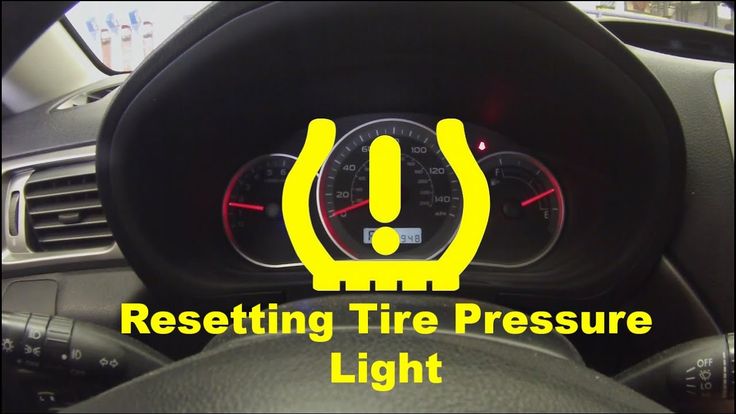
Also, the TPMS system gives an error when you install new wheels or rearrange them.
When, after these steps, a tire pressure error appeared, indicating unbalance, you should reset the settings, and then set the basic parameters. In this case, the control signal may remain even if the basic settings have been selected.
Why such problems may occur:
 It will only be possible to reset it at the service station.
It will only be possible to reset it at the service station.
See also
"Velcro or spikes: which rubber is better for the Russian winter"
Read more
How to reset tire pressure error? To begin with, imagine that the TPMS system is working properly and the blinking light indicates a problem with the undercarriage of the machine. The first thing you should do is slowly release the gas. You can not brake sharply, turn the steering wheel. After the car has stopped, inspect the tires to make sure the rubber is not punctured or broken. Then you can check if the tire pressure is normal.
Pay attention! The TPMS will not always show a tire pressure error. For example, if the tires are slowly deflating, the system will not inform you about the problem. In the same way, she will not notice the error if the tire pressure starts to drop rapidly. This usually happens when a tire ruptures. This feature of the TPMS system is explained by the specifics of identifying and counting nonconformities.
However, in some cases, it happens that the TPMS system indicator is on, but the tires are in perfect condition. How to reset tire pressure error? We understand.
The complex TPMS system in some cases starts to work incorrectly. Usually, car owners observe the following picture: a tire pressure error is displayed on the display (the tire is underinflated), but in reality everything is fine with the wheel. You have to reset the tire pressure error. Otherwise, the TPMS system starts to work incorrectly.
Photo: Shutterstock
You also have to reset the tire pressure error when there is radio interference from high voltage power lines. Or when sources of radio signals are located in the immediate vicinity. But as soon as you move away from them, the pressure error disappears and the system begins to function properly.
The reason for the malfunction may lie in the sensor, which is "failed". This damage cannot be easily repaired. How to reset a tire pressure error if the sensor flashes, while you hear a beep, lose your vigilance and find it difficult to drive a car? There are 4 ways to fix this problem.
To reset the error, pick up a speed of 80 km / h and continue driving for another 15 kilometers.
This method is the easiest to implement. If your car has this feature, then turn on the cruise control so that the speed does not change. Depending on the model of your car, you will be able to reset the tire pressure error at a speed that exceeds the specified one. After you cover a distance of 15-20 kilometers, maintaining the same speed of 80 km / h, make a stop. Turn off the motor. When you start it again, the tire pressure error will disappear.
After you cover a distance of 15-20 kilometers, maintaining the same speed of 80 km / h, make a stop. Turn off the motor. When you start it again, the tire pressure error will disappear.
Popular articles
Chic, shine, beauty: how to remove scratches on a car with your own hands
9.12.2022
48
Without damage: how to reduce the fuel consumption of your car
11/29/2022
101
How much do they pay for advertising on a car
11/25/2022
232
Best car tool kit
11/18/2022
219
What is in my name to you, or How to decipher the marking of engine oil
11/17/2022
175
Press the tire pressure monitoring system (TPMS) reset button on your car and you will be able to reset the error.
It does not matter what type of low pressure warning system is used. In any case, there will be a sensor on each wheel of your car. Sometimes it may be necessary to reboot the touch system of the car. Read the owner's manual for the vehicle. It contains information on how to reset a tire pressure error. Most often, the instructions indicate which button to press to reset.
The ignition key must be in the lock. No need to start the car, just turn it to the “on” (“ON”) position. Then press and hold the reset button, which may be under the steering wheel. We are waiting for the low pressure indicator to blink 3 times. After that, you can release the button. We start the car, it should work for 20 minutes. After this time, the computer will calibrate the sensors on the wheels. Now you can turn off the car.
See also
""
Read more
Lower and then re-inflate the wheels.
Failed to reset tire pressure error using the previous method? Then we inflate all tires to 0.2 bar, this is the pressure that should be according to the recommendations of car manufacturers. Did the error go away? Then we lower the pressure in the tires completely.
Now we pump up the wheels again. The pressure in them should be the same as indicated on the driver's door pillar or in the car's operating instructions. When there are sensors on the wheels, you need to remember about the spare tire. Now you need to drive about 3-5 kilometers, adhering to a speed of 25 km per hour. So you can reset the tire pressure error.
Remove the battery terminals and then connect it to reset the error.
Each car has a computer that receives data from all kinds of vehicle sensors, including TPMS system sensors. However, any electronics can fail. To reset the error, you will have to reboot the system, for which you need to turn off the power.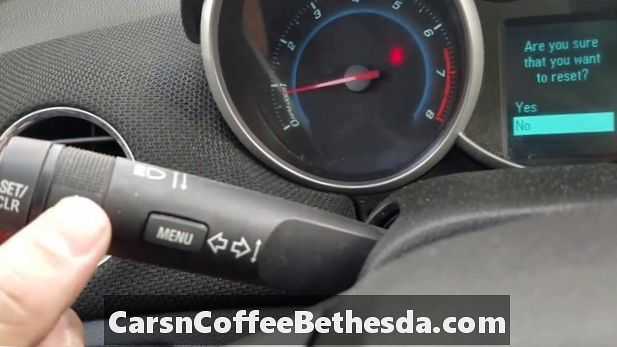
Photo: Shutterstock
To do this, open the hood. The battery is located under the hood. Disconnect the negative terminal from it. To perform this operation, use a wrench. Then sit in the driver's seat, turn the key to the "ON" position, but do not start the car. Now you need to press the signal for 3 seconds. This will use up the energy that remains in the electrical system of the machine. Then reconnect the battery. This way you can reset the error.
Sensors keep track of tire pressure. However, you need to be sure that they function properly. Of course, you do not need to constantly walk around with a special measuring device and find out the status of the sensors. It just needs to be calibrated from time to time.
It is performed quite simply. The most important thing to remember is that, depending on the make and model of your car, for each wheel there are pressure parameters strictly defined by the manufacturer for winter and summer. These values should be given to the sensors. How the installation and configuration will be performed depends on the controller used.
These values should be given to the sensors. How the installation and configuration will be performed depends on the controller used.
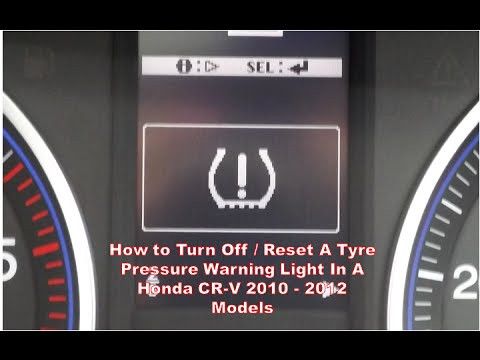 Experts do not recommend using the internal controller yourself. However, additional settings are not required if the data is read using the screen that is directly on the control system.
Experts do not recommend using the internal controller yourself. However, additional settings are not required if the data is read using the screen that is directly on the control system. For current promotions on the Halva card, which will help you profitably purchase household appliances, you can follow here.
To prevent a tire pressure error from appearing, it is important to calibrate (adjust the TPMS system) every time a change is made. For example, when you installed a new set of wheels, repaired tires, did balancing, and the like. Using TPMS controllers is quite simple. The main thing is to read the instructions for use of the device. And make sure that the tire pressure is the one recommended by the car manufacturer.
See also
"What tires can be put on rims 14, 15 and 16: professional advice"
Read more
Every car owner gets annoyed if the tire pressure error icon lights up on the dashboard.